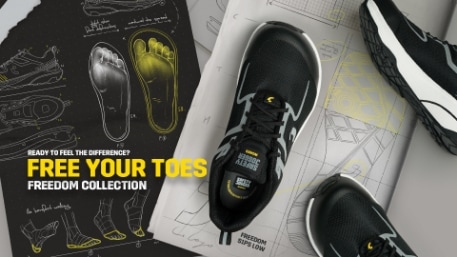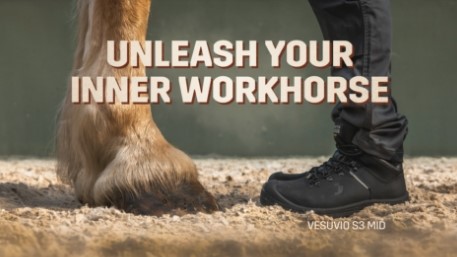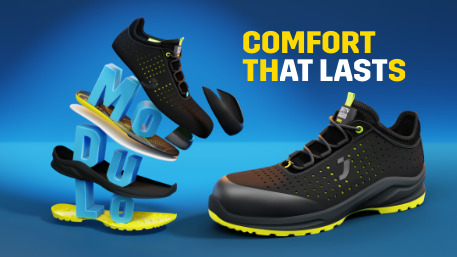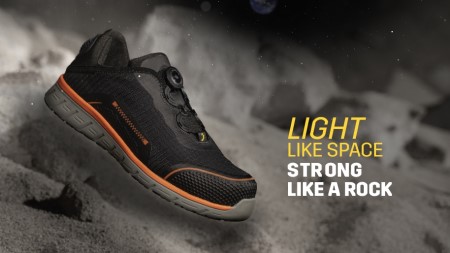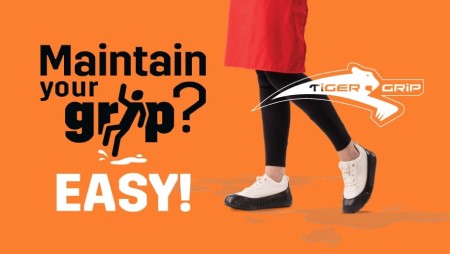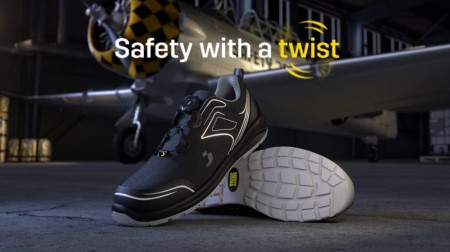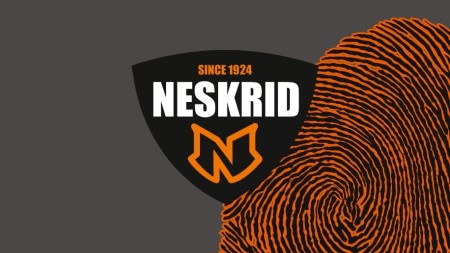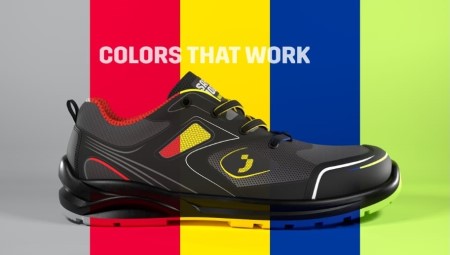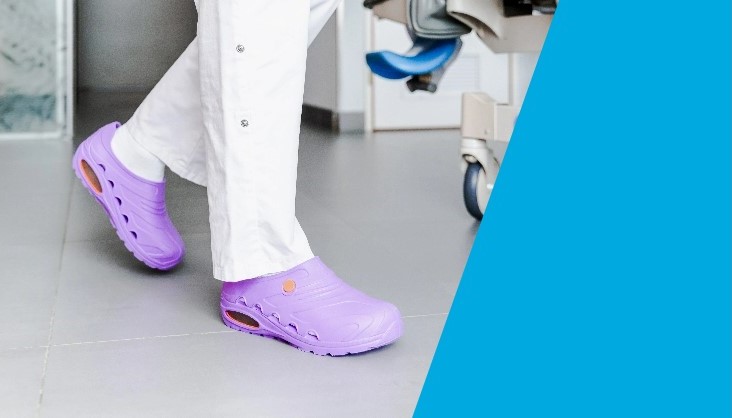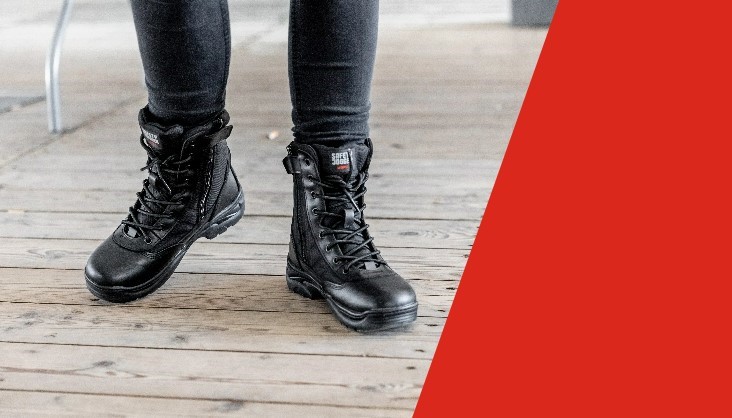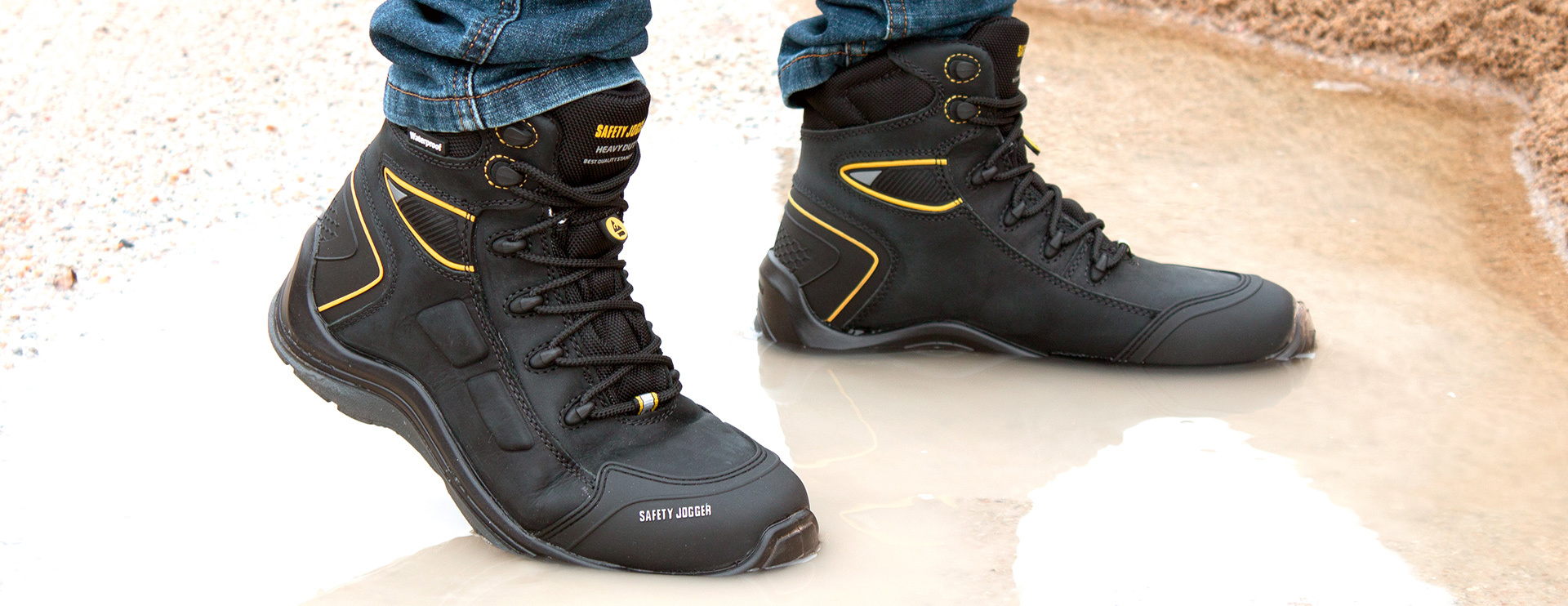Waterproof work boots & shoes
Waterproof work boots are not just for rain
More than likely you’re going to get caught up in the rain at some point on a regular workday. When you do get caught in a downpour, generally you’ll come home taking of those wet socks to spot a pair of wrinkled feet. Safety Jogger waterproof work boots or water-resistant work boots are key to prevent these kinds of situations. They keep your feet nice & dry, without losing any comfort.
A typical working environment for work boots in contact with liquids is not only limited to ordinary rain. Contact with meltwater, snow, steam, mixtures of water with acids, chemical agents, oil, soaps or organic liquids can occur.
Work boots labeled “waterproof” provide the highest quality level of protection from liquids. Waterproof work boots do what they say, they keep water out and are leak proof, keeping your feet dry in numerous environments.
The requirements for water-resistant or waterproof work boots will depend on the application, for example the degree of water resistance for an everyday safety shoe will be different to that required for a military boot, which is mostly completely waterproof.
Do you need advice or do you have a question about our waterproof work boots? Don’t hesitate to contact us right away, We're social!
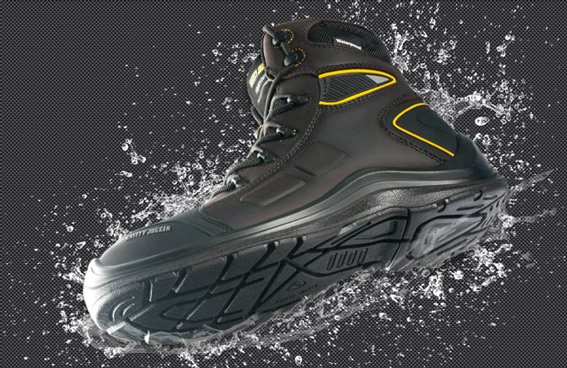
Testing the waterproof performance
The waterproof performance level of a waterproof work boot is tested on a dynamic (flexion) footwear water resistance machine.
The waterproof work boot is fixed onto a mechanical foot and set into a container of colored water to a defined water depth (approx. 20mm) above the work boot feather line. It is then flexed at a constant speed and angle, while the (potential) penetration of water into the waterproof work boot is reviewed at intervals.


The flexing action represents a simplified walking action and is designed to simulate flexing stresses in the primary areas known to be weak points. The cyclic uplifting of the toe produces realistic splashing of water over parts of the forepart not immersed.
Besides testing the waterproof sock construction, the test can reveal any wicking effects that can lead to a leaking path for water penetration through the upper of the lining of the waterproof work boots. EN20345 standard requires a minimum of 4.800 flexes for waterproof requirement.
Safety Jogger waterproof work boots resist water penetration up to 300.000 (!) flexes, that's 6 times stronger than the market standard!
Super waterproof yet breathable work boots
The main point of buying waterproof work boots is to keep your feet dry and fresh. Our waterproof work boots even allow breathability for averting sweat when the work environment involves high temperatures, along with a firm insulation in snowy, damp, or rainy areas as well.
When designing waterproof work boots, we enhance water-resistant features by using a waterproof membrane sock, between the lining and upper material.
There are different fabrics used to make a waterproof lining but the way the fabrics are woven together is what gives it gives a waterproof and breathable element to it.
Aside from keeping the water out, the waterproof membrane offers climate comfort for the feet, meaning a degree of breathability to avoid the feet to be overheated or becoming humid by locked-in sweat.


Here at Safety Jogger, we don’t think only the waterproof membrane is important. For a perfect comfort performance of the waterproof membrane in the work boot, we like to pay attention for other critical elements resulting in an ideal climate control of the feet in the waterproof work boot:
- the construction of the waterproof sock itself: perfectly sealed
- the assembly of the waterproof sock between lining and upper: without excessive sealing adhesive nor wicking paths from design details such as decorations, foams or other fabrics.
- the correct choice of upper material: breathable, non-wicking and water resistant.
You might also like to read

Hydrolysis, the crumbling of shoe soles explained
Why does my shoe fall apart? This is How We Prevent Hydrolysis in Our Safety Shoes. One of the main technical challenges with polyurethane shoe soles is overcoming an ageing deterioration known as ‘hydrolysis' ...
Hydrolysis
What does an EH (Electrical Hazard) rating mean?
EH shoes are insulating, meaning that they have such a high electrical resistance that they completely isolate you from the ground. Learn more about how EH-rated boots protect you from electrical hazards.
Electrical hazard
Complete ISO 20345 overview
A complete summary of all certifications and ISO standards for safety shoes. This page clarifies every safety shoe standard for you with a helpful overview!
ISO 20345GROW YOUR BUSINESS & BECOME A DEALER
Safety Jogger is worldwide and always looking for people who trust our brand as much as we do! We have a team of expert's ready for you to help with questions about our brand, technologies or reselling our products. So, don’t hesitate to fill in this form, we usually get back to you within a day!
Further information?
Fill in the form and we’ll get in touch!
